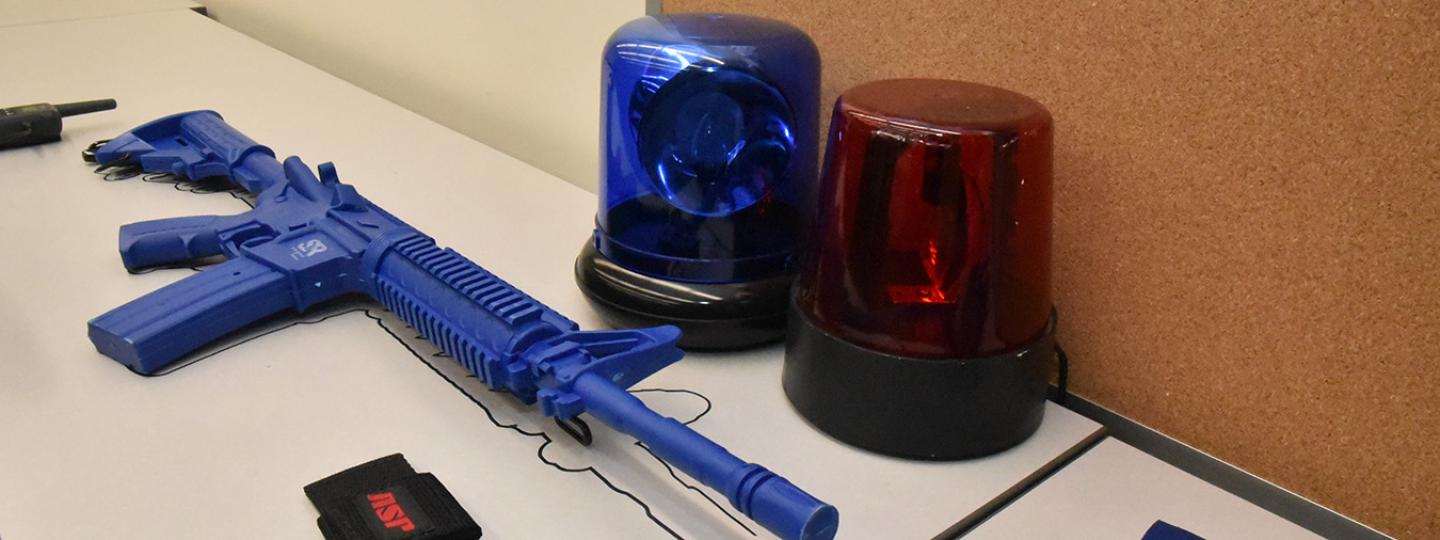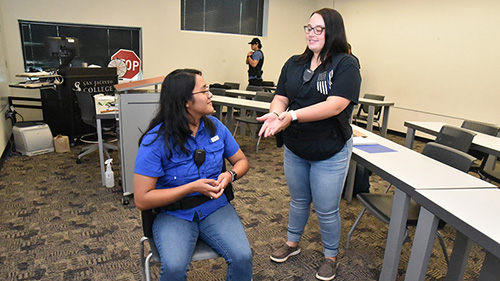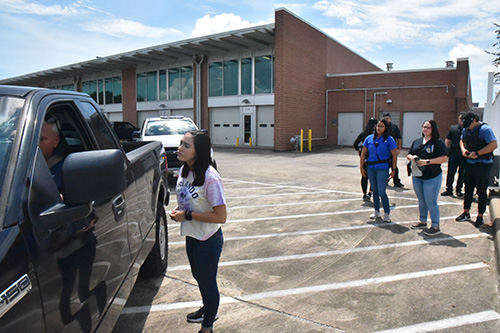Traffic class goes beyond the books

In traffic law and investigation class, students learn their ABCs but not in the traditional sense. Theirs is a phonetic alphabet.
The Texas Law Enforcement version begins with Adam, boy, Charles and is used to call out license plates, for example.
"We cover the Texas Transportation Code, which is used as our textbook," said John White, Central Campus criminal justice professor. "This class has a lab component. Therefore, we learn how to do a traffic stop using the seven-step contact approach. We scaffold this with basics from using the Texas peace officer's phonetic alphabet, radio protocol, and dealing with cooperative citizens and work our way to a high-risk felony stop."
Who should register for this course?
Anyone seeking a certificate, Associate of Applied Science degree in criminal justice, or law enforcement career would benefit from the class.
"This class is not transferable to four-year colleges because it is within a terminal degree plan," White said. "However, anyone could just take it to learn more on this topic and see if criminal justice is a track for them."
Preparing students for the real world
"I remember getting out of college, and eventually the police academy, and feeling anxious to do the job, but there was so much more I learned on the streets in the field training officer program that I never really had time to dig into, or it just was not covered," White said. "So, I teach this class from that perspective. How to handle traffic stops is the most important thing to learn in this class because there's no such thing as a routine traffic stop."
Students run through various scenarios ranging from a simple arrest, applying de-escalation and communication skills, to many other extremes. They also learn how to work a crash scene, complete a Texas CRB-3 report and basic diagram, and rehearse problem-solving policing in the field.
"They may have to deal with verbal non-compliance, check someone for warrants, confirm they have one, and have to arrest the person," White said. "Another possibility is stopping a car with multiple occupants involved in a robbery and precipitating a high-risk felony stop."
During a typical class day, students practice putting on tactical gear, handling weapons, and role-playing to practice traffic stop verbiage. They gather outside to perform mock traffic stops in specifically positioned vehicles, adding flashing lights for effect. In one scenario, White acts as a traffic law violator who's been pulled over while a student approaches as the police officer. After a few practice rounds, White discusses the activity with the class, offering kudos and helpful critiques on their performances.
Grading and final exam
In the service learning module of this class, students must finish 10 hours of service learning to complete traffic class requirements.
They're given an opportunity to shadow San Jac police officers around campus to observe and learn about traffic safety. Students present their observations to the College's police department to help problem-solve identified traffic spots with the three E's — engineering, enforcement, and education.
"Students keep a weekly journal where they reflect on subject matter learned," White said. "Also, the 'practicals' are critical. They are graded on performance of tasks learned in the hands-on training. They do a traffic law test that resembles one from a police academy, and they must do another traffic stop."
Kacy Huerta, criminal justice major, calls the class an amazing experience.
"This class is very hands-on and a lot of fun," Huerta said. "The most important thing I learned was safety. It's extremely important to be safe and careful when you're conducting a traffic stop."
After graduation, Huerta plans to become a police officer and move up the ranks with time and training.
To learn more about the criminal justice program, visit sanjac.edu/program/criminal-justice.


